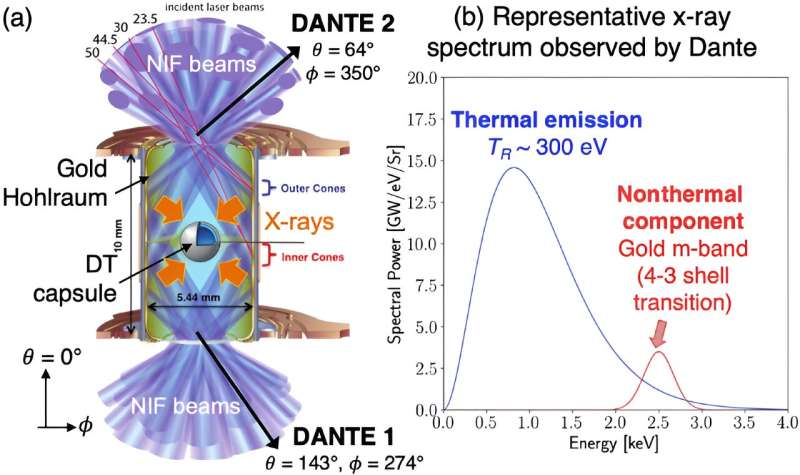February 6, 2024 report
This article has been reviewed according to Science X's editorial process and policies. Editors have highlighted the following attributes while ensuring the content's credibility:
fact-checked
peer-reviewed publication
trusted source
proofread
NIF fusion breakeven claims peer reviewed and verified by multiple teams

Five independent teams of researchers have reviewed the work and claims made by a group at the National Ignition Facility (NIF) who announced in December 2022 that they had achieved the first laser-powered fusion reaction that exceeded "scientific breakeven"—in which more energy was produced by a manmade fusion reaction than consumed by the reaction.
All five teams have confirmed their claims. Three of the teams published their findings and conclusions in the journal Physical Review Letters; the other two teams published papers in the journal Physical Review E.
After many years of effort by multiple teams around the globe, the teams have confirmed that it should be possible to use fusion as a power source. The feat heralds a new era in nuclear fusion research—and possibly power generation.
At its most basic level, nuclear fusion is simple—when light elements are fused into heavier elements, a reaction results in the release of energy. Such reactions account for the energy emitted by stars, including the sun. Prior research has shown that recreating such reactions in a lab setting requires a different environment than that found in stars—higher temperatures are needed, which means using a lot of energy.
That has led to the goal of finding a way to generate fusion reactions that produce more power than is needed to produce them. To achieve that goal, the team at NIF fired lasers at a capsule containing two types of heavy hydrogen. This resulted in the release of X-rays that inundated the fuel, inciting the fusion process. In their groundbreaking experiment, the team at NIF used 2.05 megajoules of energy to power the lasers, and measured 3.15 megajoules of energy from the fusion reaction.
In their reviews, some of the teams conducting an analysis of the experiments note that while the team at NIF has achieved a monumental breakthrough, there is still a lot of work to be done before fusion can be used as a power source. Physicists need to scale up the technique, for example, and the yield needs to be much greater to justify its use in a commercial setting.
But they also found reasons for optimism—they found, for example, that during the experiment, the material in the capsule was unexpectedly reheated due to energy from the fusion reaction to energies higher than that provided by the lasers.
More information: H. Abu-Shawareb et al, Achievement of Target Gain Larger than Unity in an Inertial Fusion Experiment, Physical Review Letters (2024). DOI: 10.1103/PhysRevLett.132.065102
A. L. Kritcher et al, Design of the first fusion experiment to achieve target energy gain G>1, Physical Review E (2024). DOI: 10.1103/PhysRevE.109.025204
O. A. Hurricane et al, Energy Principles of Scientific Breakeven in an Inertial Fusion Experiment, Physical Review Letters (2024). DOI: 10.1103/PhysRevLett.132.065103
A. Pak et al, Observations and properties of the first laboratory fusion experiment to exceed a target gain of unity, Physical Review E (2024). DOI: 10.1103/PhysRevE.109.025203
M. S. Rubery et al, Hohlraum Reheating from Burning NIF Implosions, Physical Review Letters (2024). DOI: 10.1103/PhysRevLett.132.065104
Journal information: Physical Review Letters , Physical Review E
© 2024 Science X Network





















